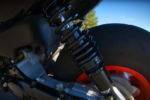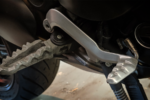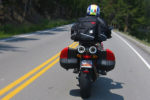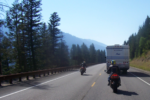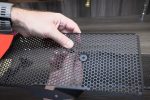Some say that Ducati is the most misunderstood motorcycle company in the world, and if that’s the case, then their quirky Multistrada would be the most misunderstood company’s most misunderstood bike. That’s a lot of misunderstanding, but it does explain why the bike designed for “many roads” has never been a big seller.
The quirky bike doesn’t even fit in any existing bike category. It’s not a traditional sport-touring bike, it’s not a traditional adventure (ADV) bike (Ducati even says it’s not intended for dirt-use) and it’s certainly not a traditional sport bike. So what is it? We like to think of it as a cross between a SuperMoto and a Sport-Touring bike.
Thats all cool and all, but it was this single, (albeit tiny) simple photo taken during the Centopassi (100 Mountain Passes) a competition built around the venerable Multistrada that caught our attention and got us to give the bike a second look – a second look that has resulted in five Gen 1 Multistradas finding their way into the garages of various CanyonChasers.
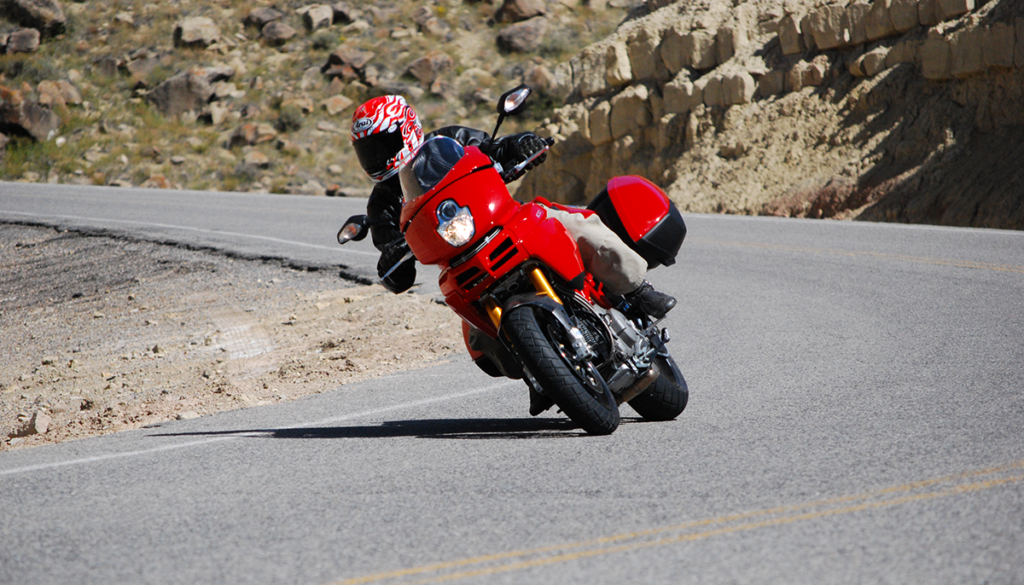
But let’s back up a step; Multistrada creator Pierre Terblanche has been designing motorcycles since the 90’s and is most famous for the Ducati Supermono, but should be most appreciated for his brilliant Cagiva Gran Canyon.
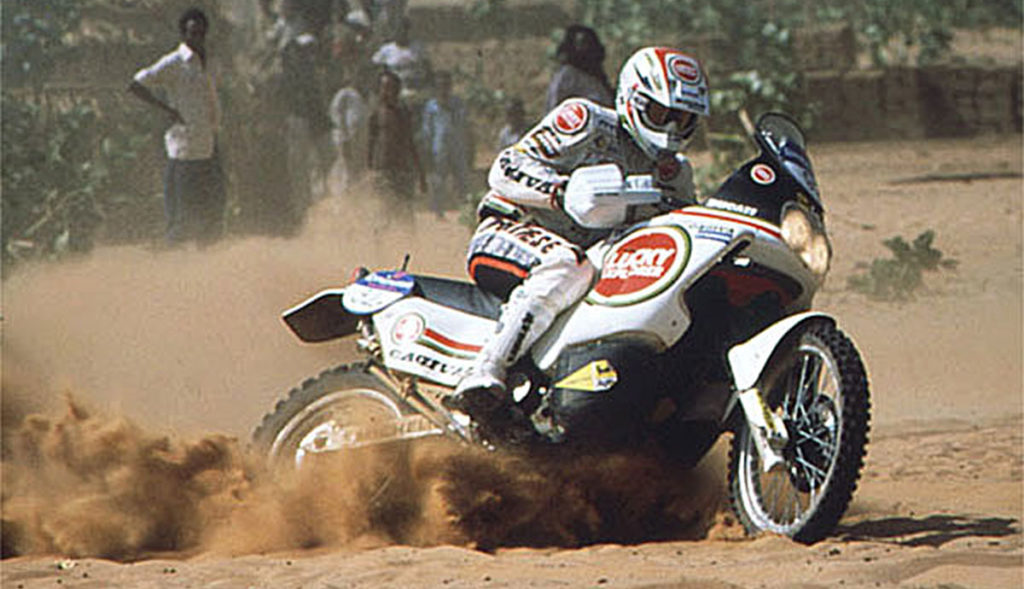
The Gran Canyon was designed as a replacement for the two-time winner of the Paris-Dakar (1990 & 94), the Cagiva/Ducati Elefant (with an ‘f’), which is still considered by many to be the best big-bore dirt-bike of all time. The subsequent Gran Canyon was much more street worthy but despite its brilliance; only a handful of Gran Canyons even made it to the chrome cruiser obsessed States.
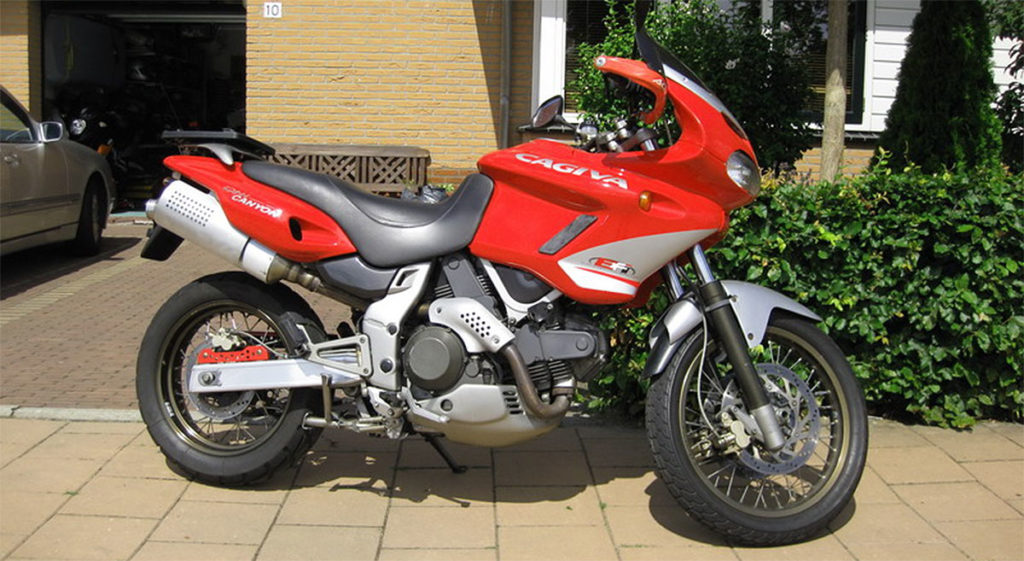
A brief test ride on a Gran Canyon embedded the bike into my psyche as being, quite possibly, the best motorcycle I’d ever ridden. It wasn’t as dirt-worthy, nor as porky as BMW’s GS and it worked a lot better than Yamaha’s weak-selling, budget suspension and brakes, TDM. The Gran Canyon was nimble, lithe and able to tackle track-days as well as fire roads. It did have a few problems, however. There was no good way to fit even the smallest of tankbags on the bike and the windscreen could have been used as a Guantánamo torture device.
Many years ago, during a jaunt along California’s famous CA-49 I came upon one. The Gran Canyon disappeared like warm cookies fresh from the oven as soon as the road became moderately bumpy and technical – leaving my 130bhp sport bike and my aching wrists in the proverbial dust. Eventually, Cagiva and Ducati divorced and Ducati supplied motors were replaced with Suzuki TL motors. The “Canyon” was renamed the Navigator and saddest of all, Cagiva was no longer able to sell bikes in America.
Then, unexpectedly, Ducati announced a follow-up to the Elefant and Gran Canyon. The Multistrada shocked the world at the 2001 Milan show and then went on sale in 2003. The first year bike had some teething problems. The side-stand was too short allowing the bike to topple over quicker than a toddler, the seat was nothing more than a piece of plywood covered with vinyl and delicate mirrors broke easily and were placed far too close together to see anything more than your own shoulders. But it was the unusual looks that kept most people from taking Multis home with them.
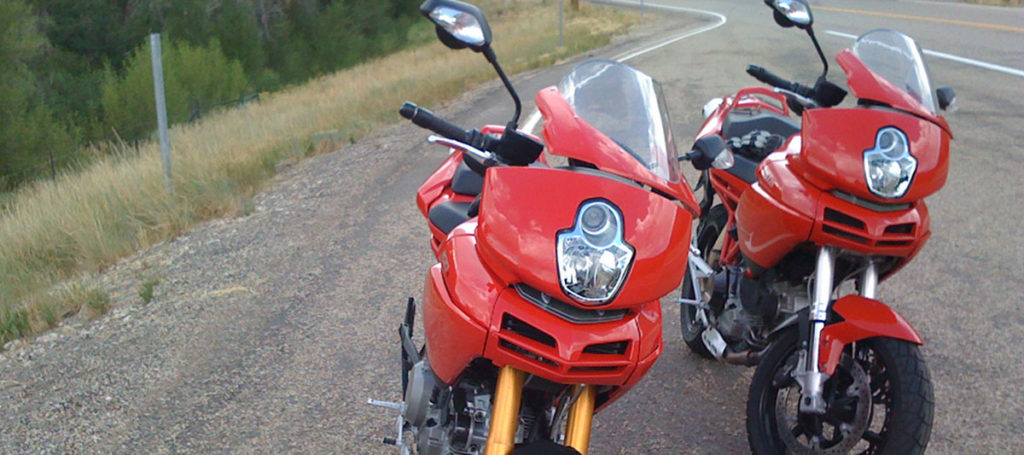
Take for example the wonky split fairing/windscreen. It’s so weird. But Terblanche knew that the windscreen on the Gran Canyon was awful. He also knew that the reason why it was so bad was because it had to be fairly far away from the rider in order to clear the sweep of the handlebars. So Terblanche put the screen as close to the rider as possible by splitting the fairing in half and attaching the screen directly to the handlebars – clever. And by 2004 the side-stand was lengthened, the mirrors widened, the seat thickened and the windscreen was raised.
The Multistrada has come in three basic versions; a 620cc version (only available in 2005-06), a 1000cc DS (dual spark) version and a high-zoot S (sport) version that comes with some carbon fiber bits and Ohlins suspension. But that’s not to say the Showa bits on the DS are “budget”. In fact, the Showa stuff was so good that some claim Ducati “downgraded” the suspension to Marzocchi/Sachs kit in order to make the S version more appealing. The 1000 was then bumped up to 1100 for the 2007 model year resulting in a slightly less revvy, but torquier motor. The 1100cc version also fixed the weak valve guide seals that plague some 1000DS motors.
Over the years five Gen1 Multistrada’s in various CanyonChasers garages, and the only reason there are not more can be attributed to a need for some individuality. But this many bikes should tell you something about its modest brilliance. We are not saying the odd Duck is the worlds most perfect motorcycle, they still have some quirks. They are, after all, Italian.
Fuel
The gas gauge on the 1000 is comically pessimistic, showing a “low fuel” light after less than a half a tank of gas. This seems to be the most bothersome problem reported on the Muiltistrada forum and there are literally, hundreds of discussions all looking for solutions. But when the significant overhaul took place in 2007, jumping engine size up to 1100cc’s, one of the other tweaks fixed the fuel level sensor.
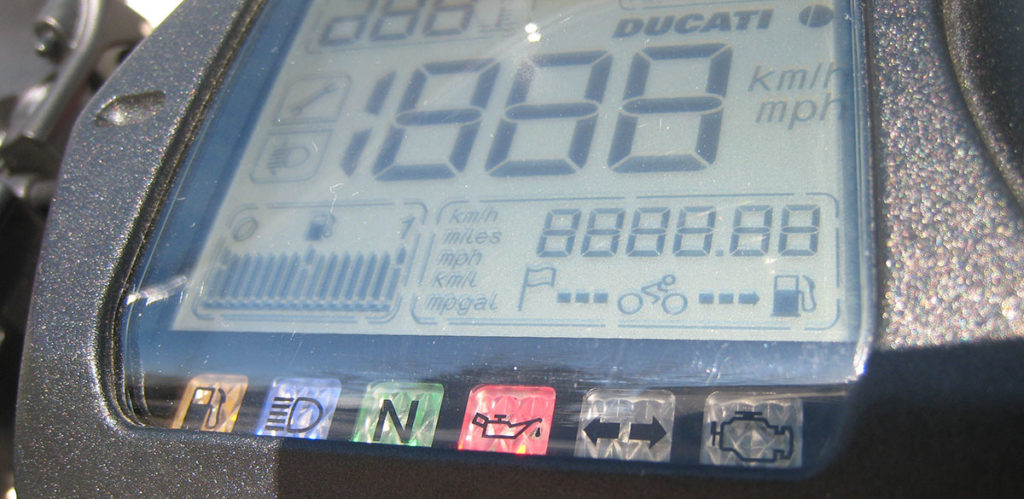
On our 1000, the fuel light never really bothered us. We knew the bike had a 5.5 gallon fuel tank, so we just calculated our range the old fashioned way by resetting the trip meter at each fill up. And it’s not like the Multi is short on range, we regularly go 180-190 miles before bothering to fill up, and on the newer 1100 model the fuel light sometimes doesn’t light up for 230 miles!
The 1100 also got a closed loop fuel injection system and a catalytic converter so mileage is better and the exhaust is cleaner. When the 1000 gets mpg’s in the high 40’s, the 1100 will get low 60’s! Take that Toyota Prius!
Maintenance
It’s a Ducati, so first you are probably thinking it’s going to require lots of maintenance. And you’re partially right. If you are afraid of spanners and sockets you’ll probably grow to abhor anything other than a Honda. But if you like to spin wrenches and work on your own stuff, the Ducati is wondrously easy to service because it was designed with the mechanic in mind.
Oil changes are your modern fare, nothing special and removing the rear tire on the dapper single-sided swing-arm is as simple as removing a single bolt. (46mm or 1 13/16’s socket not included). Wary owners should keep an eye on the cush drive on the rear hub. In rare cases, the cushers start to slip out and need to be pressed back into place.
Front Wheel
Removing the front wheel is a royal pain in the posterior. When Terblanche assembled the Multistrada, he used the front wheel that had been developed for Ducati Corsa. So the wheel is gloriously light and the front brake rotors are delightfully enormous. This becomes a problem when you need to remove the front wheel. There is barely enough clearance for the calipers to clear the rotors and if you are impatient, you will snarf your wheels. We’ve taken to putting a couple of layers of blue painters tape on the wheel to prevent scratches. Also, a lot of Multi owners complain of pulsing brakes, but we believe this is caused by hasty brake caliper removal. If you don’t take your time, the rotors will bend when you twist the calipers out of the way.
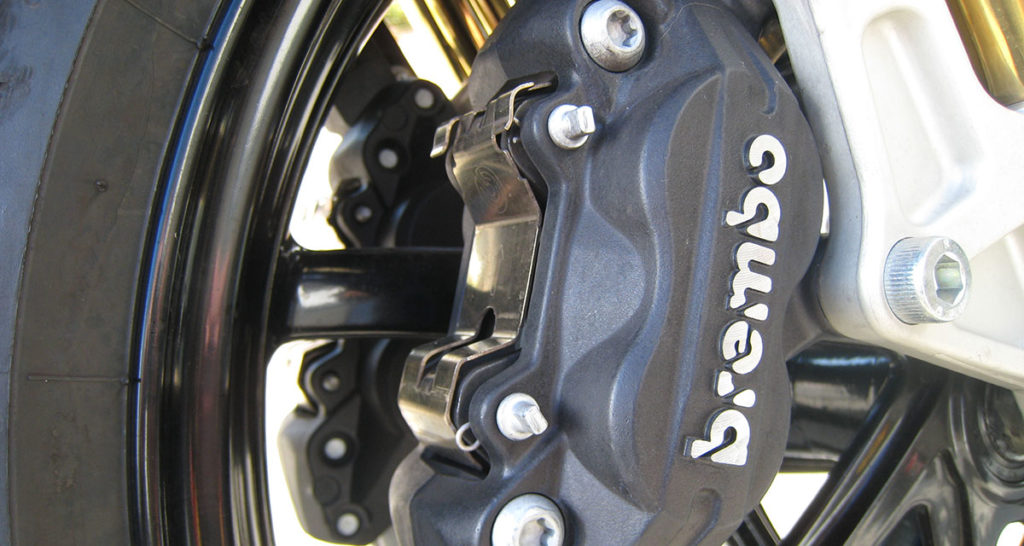
Valves
And then there are the dreaded desmodromic valves. While valve adjustments will be frequent, they can be done in a couple of hours – less than half the time it takes us to adjust valves on shim-under-bucket style motors. Changing belts can be done in less than 30 minutes, and that’s if you take your time. One thing is there are scads of web resources that detail valve adjustment procedures, belt change procedures – there are even YouTube videos that walk you through the job.
So, while you may be adjusting your valves more frequently, we figure you still come out ahead because the work takes half as much time to perform. The only time-consuming part of adjusting the valves on the Multistrada is removing the gas tank – which is pretty much all of the bike’s bodywork. Also, if you are accustomed to Desmo’s and have worked with them in the past, be aware that the newer DS motors do not have timing marks on the heads or pulleys anymore. On the plus side for maintenance-phobes, starting with the 2007 model year bikes (the 1100s) Ducati doubled the recommended interval for valve adjustments to 7,500 miles. Check out the cool Desmo animation at Bluming Inc.)
Reliability
Of our Multistradas, and well over 50k miles of use now, we’ve had four problems worth mentioning and all of them were covered under warranty. On both of the two 2007 models, the speedometer would regularly reset to kilometers (one of them after installation of the Termignoni performance mufflers and matching ECU) and both needed to be replaced. On the other 2007, the CDI/Brain-Box failed and needed to be replaced. It manifested itself by not allowing the bike to idle, although the bike still ran. On the 2006 model, a small bit of paint flaked off the frame near the front sprocket. Again, all of these problems were covered under warranty and only one of them affected the ability to ride the bike
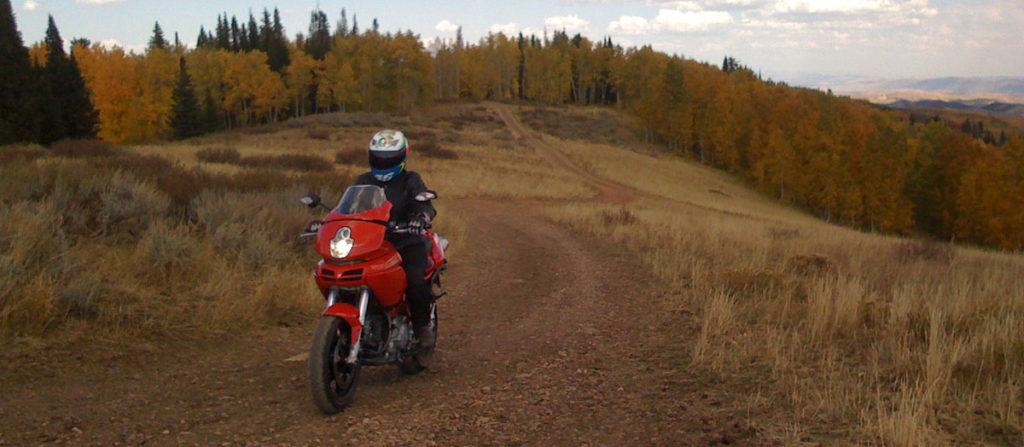
What’s more, we’ve taken our Multistradas through blizzard’s, torrential downpours, to the top of a glacier in Alaska and the bike has always taken us there and home again, happy to be along for the ride. And because the bike is always such a willing partner, we tend to ride more, more frequently and are willing to go more places – thanks to the humble Multistrada.
Function
On most bikes a bit of customizing is needed to get them ready for touring duty. Common upgrades are seats and windscreens at the minimum. Our Ducatis’ have needed none of this. The seat was good for two-weeks of solid riding and Terblanche got this windscreen right. Ryan even swapped away from his Ducati Performance touring screen in favor of the stock screen. Joe and Kris have fit a Zero-Gravity double-bubble, but were never able to determine if one was better than the other. Joe also replaced the stock handlebar with a Rizoma having slightly more pull-back, which he contends gives him a lightly more neutral arm/shoulder position compared with the almost-straight stock bar. With this setup (but before the double-bubble) he rode almost 900 miles in one day in comfort.
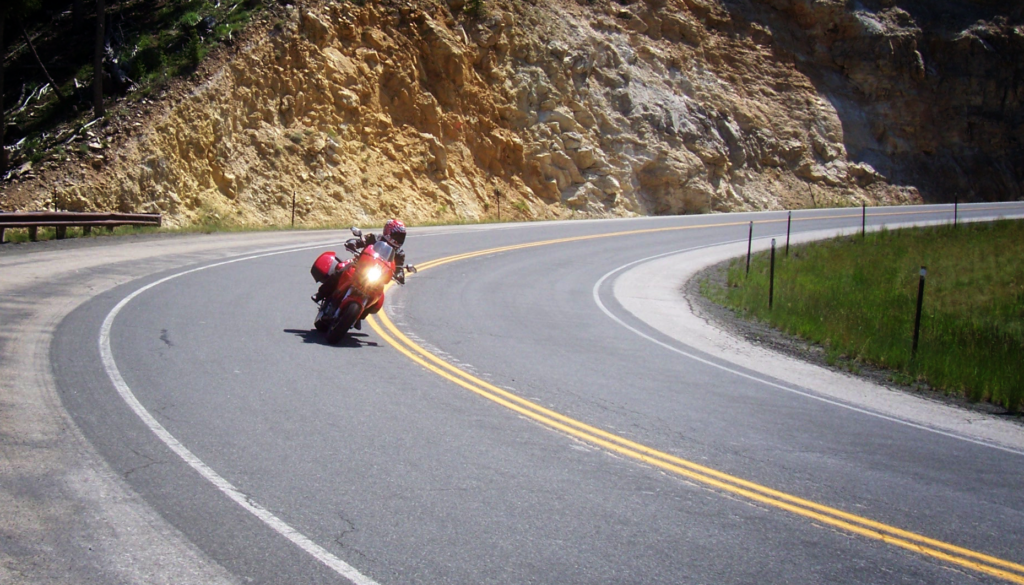
Hidden Compartment
The hidden side pocket, while limited in capacity, has proven itself to very useful. It’s out of the weather, unlike under-seat storage, so its contents stay dry and clean. The biggest problem with the side compartment is trying to open or close the hatch without the contents spilling out. An optional cargo net can be purchased to help keep items from tumbling onto the ground and we think this should be standard equipment and not an option. The other problem with the side compartment is there are two latches keeping it closed. Make sure that both of them click and latch otherwise it has a tendency to open itself and spill its contents like a teenage binge drinker, and likewise it’ll spew at the worst possible moment.
Headlight
You probably think the Cyclopes headlight is rubbish and couldn’t possibly provide any decent illumination. That is only the case in the event the light still needs to be properly aimed (something that should have been taken care of during dealer-setup). On pre-07 models, you aim the headlight using a menu inside the gauges. On newer models, you need to aim them using a screwdriver. We’ve noticed that the S model sits a little bit taller, likely because of a longer shock or some-such, and didn’t require any aiming. The non-S’s sit lower and the light definitely needs to be pointed down a smidgen.
Luggage
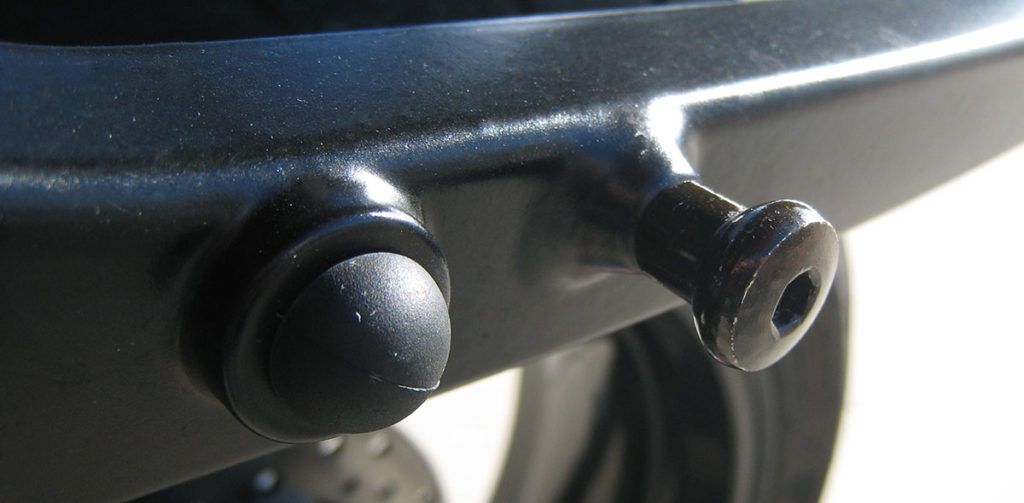
We have the factory hard bags for all our Multis and think they are fantastic. Shaped oddly, they still swallow an entire full-face helmet and have much more space than you would think. Plus the cool, pointy shape makes this the only bike we’ve ever known of that actually looks good with luggage fitted. The bags are designed by Givi so they have the robust mono-key latch system and proven clasps and hinges. They also have the Givi problem with the bumpers. When you put the bags onto racks, the hinging motion has a tendency to pull the rubber bumpers out of place, which allows the bags to bounce off the metal carrier racks. There are several alternatives to the rubber bumpers, the details of which can be found on most sport touring forums. However, if you pay attention, it’s not much effort to ensure the rubber bumpers are seated properly and a little bit of silicone dribbled onto the bumpers before fitting the saddlebags seems to minimize any bumper loss.
Handling
And now for the best part of the Multistrada – its handling characteristics. Combine the long travel suspension of a dirt bike with the damping characteristics of a race-bred sport bike and things stay stable at higher speeds, not to mention the same race-bike brakes, add a seating position that comfortable enough for all-day riding, but still keeps your feet below you so you can use your legs to help the bike change direction, combined with a wide handlebar that makes steering inputs telepathic and you end up with a motorcycle that can change direction faster than a trout.

Take the Multistrada to a race-track, however, and it’s quickly overwhelmed. The sit-up-and-beg seating position suddenly stops working and you just can’t seem to get your posture right; the bike that felt fantastic on the road now feels clumsy and awkward.
Now try the Multi on some gnarly section of muddy or rocky single track and you’ll end up with a similar situation. The plastic feels too delicate, the vibrations feel like they are going to shake to smithereens and you worry that any rock larger than a potato is going to make your wheel the same shape as a Pringle.

Keep the Multistrada on dedicated roads and the story is quite different; this where the Multistrada wants to be. Long, desolate empty roads and the bike is comfortable enough to sit back, sit up and look about while the road passes you by. Crowded, congested city streets and the powerful seating position gives you a commanding view of the battlefield. Change direction and squirt your way through traffic using the massive amounts of torque. Point the bike up your favorite canyon road inspired by Shirley Temples ringlets and be ready to have more fun than you knew was possible. Even when the tarmac crumbles away into a cobbled excuse for a road, the bike becomes even more fun as you bounce and bound over irregularities like the Easter bunny. When the road degrades into graded gravel, the Multistrada’s Paris Dakar winning DNA will keep the bike planted and stable. In other words, the Multistrada works on many roads and always feels like the right bike for the job.
Of course, to add all these wonderful traits into one motorcycle some concessions need to be made, the most obvious is the looks. But to say it’s ugly is terribly unfair. It’s like saying an A-10 Warthog or an AH-64 Apache helicopter is ugly. Well, they are ugly – but they are not without beauty.
The best way we can describe the bikes looks is by going back, this time to High School and that tom-boy so many of us used to pal around with. Sure she wasn’t the prettiest girl in your class. Her hair was always pulled back into a tight ponytail; she was a little too skinny, a little bit lanky. She never wore make-up, never wore pink and never fussed about silly girl things like lace or princesses. But when it was time to get into trouble, she was always a willing partner, unafraid to get dirty or bruised. After a while, she started to look differently. She didn’t seem to be so lanky anymore and for the boys who knew, she was all they could think about.

And so is the Multistrada; lacking the lascivious curves of a pearl white 848 or the salacious shape of a 916. But the Multistrada doesn’t have the rigorous maintenance schedule required by liquid cooled, four-valve Ducati motors. Those sultry superbikes may be the objects with which we wish to have a torrid fling; an unbridled track day or a tempestuous romp along a canyon road. But the Multistrada is a bike you can live with, a bike you can bring home to Mom, and what nobody else realizes is that for all the bumps and twists in this world; you are having a helluva lot more fun, a lot more frequently than they probably are.

